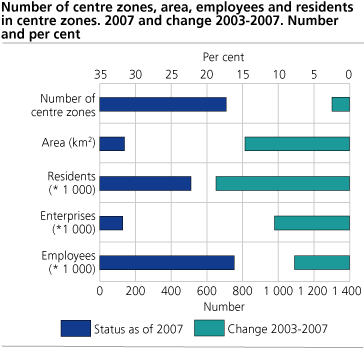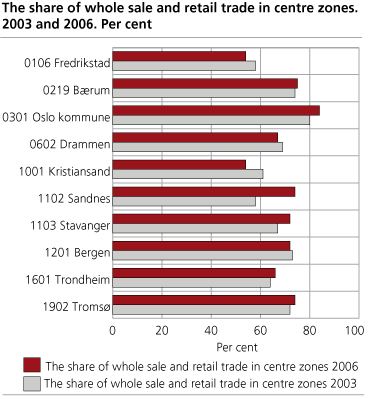Content
Published:
This is an archived release.
Higher activity in centre zones
The number of residents has increased slightly during the last four years. This increase has surpassed the net area growth in the same period resulting in a slightly higher centre zone resident density. The number of employees has also had an increase in the period.
Slightly above 511 000 people (close to 11 per cent of the population) lived in centre zones in Norway as of January 1. 2007. The centre zones have increased continuously during the last years. From 2003 to 2007 the number of residents rose by 19 per cent while the urban settlement population increased by only 4 per cent in the same period.
Higher increase of residents compared with area growth
The number of residents increased more than the area growth, resulting in more residents per square kilometre centre zone as compared with 2003. Number of employees and enterprises also increased in the period, but not as much as area growth leading to a net reduction in density.
High density of residents is an indicator for effective land use utilisation as well as less energy demanding transportation. High density of residents can on the other hand indicate poor dwelling conditions, scarcity and pressure on green areas.
The density in centre zones increase by urban settlement size. There are more employees than residents per square kilometre in all size groups. The density of employees has decreased in most size groups (2003 - 2007) because the area growth has been higher. Resident density has increased in the majority of size groups except the smallest urban settlements.
Tables:
Additional information
This statistics monitor the development in centre zones in relation to residents, employees and density. Based on automatic delimitation of the centre zones.
Contact
-
Erik Engelien
E-mail: erik.engelien@ssb.no
tel.: (+47) 91 12 55 45
-
Jørn Kristian Undelstvedt
E-mail: jorn.kristian.undelstvedt@ssb.no
tel.: (+47) 94 50 68 64



